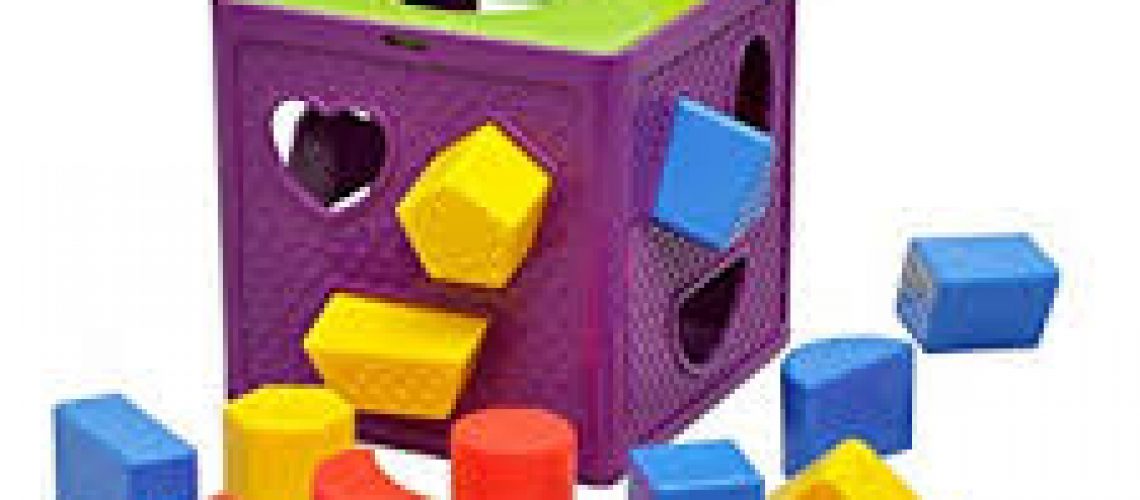Pegs – we hear about them all the time; our 2e children’s school experience is often described as “trying to fit a square peg into a round hole.” I have to be honest; I can’t stand that expression. Why does square have to be negative? Why do we want everyone or anyone to fit into the same-shaped hole? Shouldn’t our goal be more like the children’s shape sorter, where we have to find the space that fits the particular block? There were circles and ovals and plus-signs and octagons. They were different colors to boot! What happened when our children tried to cram the circle into the oval spot (or, the proverbial square into the circle spot)? With children the same is true. It’s painful to try and change to fit someone else’s expectations, and it doesn’t work.
As I begin looking at colleges with my daughter, everyone keeps saying “find a good fit.” Admissions directors say, “Look around and make sure these are people with whom you want to spend four years.” College counselors advise, “Choose a place that makes you feel good about you.” Why do we wait until our children leave us to teach them these lessons?
A client’s eleven-year-old son shared a YouTube video, 6 Problems with Our School System, discussing how the goal of school initially, was to prepare students for work. During the industrial age students were trained to become factory workers. The video argues that this specific round hole – school – hasn’t changed to meet the current educational needs of preparing students for current world work and relationships. Additionally, we know now that different brains learn differently – yet our modes of delivering information to students is consistent and cookie cutter – even if our students are not thriving.
“Train a child according to his way; even when he grows old, he will not turn away from it” (Proverbs 22:6) is an adage that I keep in mind when contemplating best practices for teaching and parenting. This proverb, written in the 10th century BCE, acknowledges the need to meet a child where he is in order to reach him and build long-lasting love for learning. In marketing and development this is often referred to as “the hook,” the thing that makes the buyer or funder relate to what we are trying to sell or financially support. Similarly, we need to understand our students’ perspectives and make learning relevant and meaningful.
I’ve decided to embrace “PEG,” to turn the term into an acronym for 3 ways to help kids succeed in school. In my recent YouTube video, Three Talking Points at IEP Meetings, I describe three ways for parents to advocate on behalf of their children in school. They include: Personal connection, changing the Environment to fit the child, and teaching to the Gift. Through these three ideas, we can take this notion of pegs and holes and carve them to meet everyone’s needs.
Personal Connection
In order to adequately, appropriately and productively address a child’s needs in the classroom (or anywhere), forging a personal connection is the first and foremost step. Get to know the student – what do they do when they aren’t at school? What’s their favorite book? Their favorite video-game? Their favorite ice cream flavor? Ask them one-on-one about their interests; take the time at lunch, during unstructured time or call them on the phone. Find out what makes them tick and what ticks them off. Ask parents to share anecdotes of what their children are doing after school, on weekends, and on vacation. If parents aren’t already emailing updates/photos or filling you in on what their child likes and dislikes about school – ask. Opening lines of communication will only help you find the hook that allows you to reel in that learner.
Changing the Environment
Once a personal connection is forged, it is much easier to tailor instruction to a student’s needs. If a student has sensitivities, worries or learning challenges, knowing about them allows a teacher to recognize how they manifest vis a vis learning. When you are aware of a child’s particular interests, strengths and curiosities you can use these to spark interest and modify teaching when teaching in a deficit area. Now, you’ve got your recipe for success. Selectively avoid and address this student’s triggers and needs. Adjust your teaching style, assignments and class participation requirements to allow this child to flourish. Find ways to incorporate strong skills into challenging learning. A great artist who struggles to write? Allow him to draw his essays. A bright, curious, deep-thinker who has reading challenges? Find meaningful, moral content for her to read. A math whiz who struggles with reading? Make word problems part of their math curriculum. The sooner students feel capable and competent in a classroom, the sooner you will see them relax, participate and take responsibility.
Teaching to the Gift
All too often I hear educators state that “until [insert child’s name] can get his behavior under control, I can’t allow him to participate in [insert enrichment or acceleration activity]. This is the exact opposite strategy to elicit desired behavior or to cease undesired behavior. In fact, best practices and research indicate that teaching to the gift – finding out a child’s interest and letting them run with it or enriching their experience – is the best way to diffuse frustration and engage a challenging student. There are resources on best practices to reach and teach gifted students. The school-wide enrichment model (SEM) developed by Joseph Renzulli and Sally Reis is a “systematic set of specific strategies for increasing student effort, enjoyment, and performance and for integrating a broad range of advanced learning experiences and higher-order thinking skills into any curricular area, course of study, or pattern of school organization.” See, https://gifted.uconn.edu/schoolwide-enrichment-model/rising_tide/ Just as I like to say I give parents permission to parent their 2e children differently, SEM gives educators permission to deviate from a standard, generic path and has proven to increase satisfaction and fulfillment on both the student and educators’ behalves.
Cramming square pegs into round holes never works but using tools to alter the hole – to tweak the environment – in order to fit a student’s needs, allows for a much smoother, more rewarding educational experience. Altering the environment is only relevant if we base this change on the child’s needs and understand their personal perspective. When we gain this understanding, we can engage them in deep and meaningful ways.

Author: Julie F. Skolnick M.A., J.D.
Julie Skolnick, M.A., J.D., is the Founder of With Understanding Comes Calm, LLC, through which she passionately guides parents of gifted and distractible children, mentors 2e adults, and collaborates with and advises educators and professionals on bringing out the best and raising self-confidence in their students and clients.

